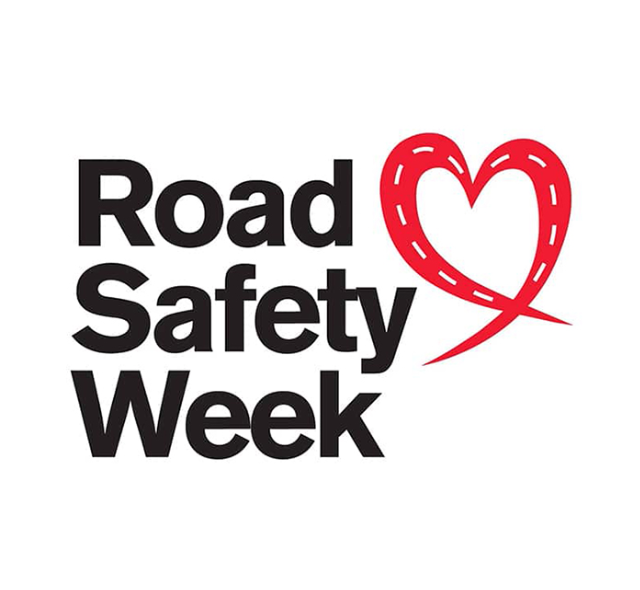- UNIFORM BY SCHOOL
- Girls School Uniform
- Boys School Uniform
- Skirts
- Boys Trousers
- Girls Trousers
- Polo Shirts
- Blouses
- Shirts
- Blazers
- PE Kit
- Clearance


Girls School Uniform


Boys School Uniform


FREE delivery - Ends Monday at Midnight
(X)







Now the clocks have gone back and daylight hours are getting shorter, children are going to be travelling to and from school in some darkness.
Whether you walk, cycle or drive to and from school, it’s everyone’s right to feel safe on the roads. Road safety is a great subject to engage children and young people with as road danger affects everyone.
From the 19th to the 25th November, it’s Road Safety Week in the UK, run by the road safety charity Brake, and this year’s theme is ‘speed’.
According to Brake, road crashes are the leading cause of death for children and young people worldwide, and more than six children are killed or seriously injured on roads every day in the UK.
Danger from traffic is also a big factor in whether children and young people are able to walk and cycle to school, which in turn affects their ability to be healthy and socially active.
There are many things you can do as a road user to make sure you help keep roads safe.
Pedestrians
If you walk your children to school, there’s lots you can do to be aware and be seen:
Hold on to an adult – little ones are often too small to be seen by cars and can run into the road in a split second. By making sure they’re holding an adult’s hand you can be sure they stay safe
Use road crossings when you can – it can be so easy to take a short cut but it’s safer to use a zebra or pelican crossing
Put mobile phones away – too often children and adults walk along with their head staring down at their phone and don’t look properly when crossing the road. They also might be listening to music on their smartphone, so either turn music off when walking or remove an earbud
Teach your kids to stop, look and listen. Take time when crossing roads, look for any cars, lorries or bikes coming and listen out, which is just as important as looking
Wear bright coloured clothes so you can be seen more easily in the dark. You can also get reflective strips to put on rucksacks, school bags and shoes so motorists and cyclists can see you
Cyclists
If you’re cycling with your children to school, you’re the middle-man in the ‘hierarchy’ of road users. You need to watch both for motorists who are bigger and going faster than you and pedestrians who are slower and will be crossing your path.
Wear a helmet – although it’s not a legal requirement, making sure kids where a cycle helmet is a must. Lead by example by wearing one too
Be seen – make sure children are visible by investing in some high-vis gear. You can get high-vis tabards for kids but also reflective strips for bike helmets, rucksacks and shoes to help keep them visible at dawn or dusk
Stick together – sometimes children can still be wobbly when riding bikes so it’s important to ride close together and not let children go too far ahead. If there are cars overtaking, pull into the side of the road to let them pass before continuing your journey
Find a safe route – this might mean going a slightly longer way round, but if it avoids busy roads then you’ll all feel safer
Motorists
The Highway code states in the hierarchy of road uses, as a driver you’re the one that can cause the most significant harm in the event of a collision and must bear the greatest responsibility when it comes to taking care and reducing dangers to others around you.
If you’re driving your children to school, you need to be aware of other road users such as cyclists and pedestrians crossing your path.
Observe speed limits – schools and built-up areas mainly have a 20mph speed limit around them now so be sure to observe them. There’ll be a lot of pedestrian traffic around schools so take it slow and let people cross the road
Be aware of Highway Code changes – last year there were changes made as to who has the right of way at junctions. It highlighted that at junctions, drivers should give way to pedestrians crossing or waiting to cross on a road into which they are turning. The 2022 Highway Code says that if pedestrians have started crossing the road and drivers want to turn into the road, pedestrians crossing have priority and traffic should give way to them
Be aware at crossings – as a driver you must give way at crossings and be especially aware at zebra crossings as you don’t have a red light. In the dark with other cars’ lights shining in your eyes, it’s not always easy to see if someone is waiting to cross, so take extra care.
It’s likely that you’ll be at least one, if not all of the above road users at some point so always take your time and be safe.

